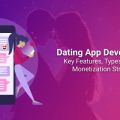The Transformative Potential & Key Features of Web 3.0, the Future of Internet!
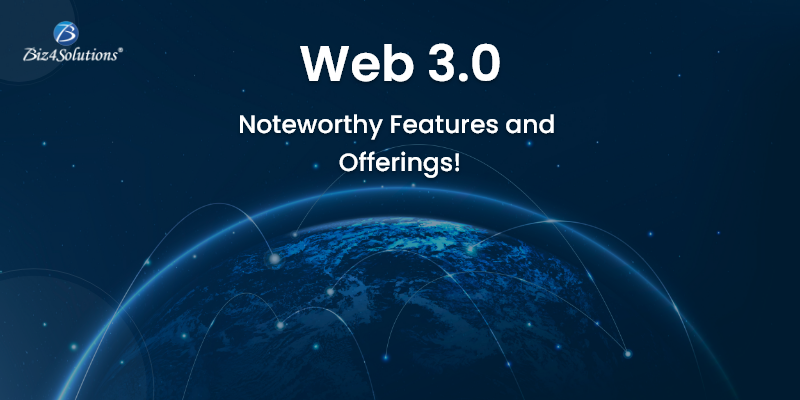
What’s all the buzz about Web 3.0? Why is it being considered the Future of Internet services?
Web 3.0 is the next level of the ever-evolving web that is replacing Web 2.0 at a fast pace. It comes with a promise of opening up myriad untapped avenues in the realm of advanced computing and IT. Web 3.0 has started unfolding its potential to achieve unimaginable outcomes. Its disruptive power is considered to be way more than its predecessors - Web 1.0 and Web 2.0. However, it’s still in its formative stage & we can experience its full potential in the next 5-10 years.
Catch a glimpse of the journey of Web 3.0 to date. Also, explore what Web 3.0 apps & websites have in store for diverse industry verticals in the years to come.
Evolutionary Journey from Web 1.0 to Web 3.0
The web underwent a series of transformations since its inception. Take a sneak peek!
Web 1.0
Web 1.0 introduced the concept of the internet; a storehouse of reliable information. At this phase, the web was just like an electronic read-only medium that shared authentic data with users. This web version did try to introduce interactivity through the shopping cart systems but failed to deliver true individual interactivity. Users were not able to create their pages on the internet or even post a comment on any web content. Users were able to just gather information on concepts & facts. So, Web1.0 is also known as the ‘static’ or the ‘read-only’ web.
The technologies used for Web 1.0 were URL (Uniform Resource Locator), Hypertext Transfer Protocol (HTTP), & HTML (Hypertext Markup Language).
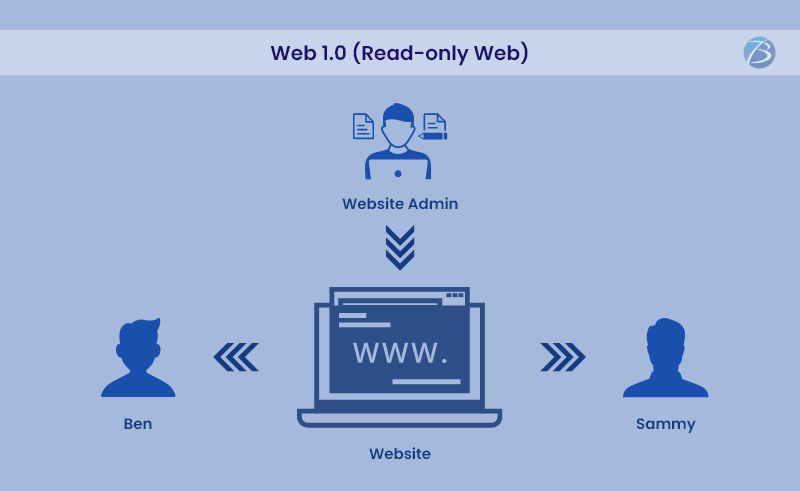
Web 2.0
Web 2.0 elevated the web to the next stage by bringing real interactivity into the picture & globalizing economies. It introduced dynamic content and the practice of collecting user inputs. The “read-only” internet transformed into a platform where an average internet user was able to experience interactivity. Individuals were able to connect with other individuals, communities, and websites by posting content/comments, working with video players, etc.
This era witnessed the emergence of social media apps, online discussion forums, on-demand services, and many more. Revolutionary websites and applications such as WhatsApp, YouTube, Wikipedia, and Facebook came into being. And, we all know the amount of popularity and acceptance these apps have garnered.
Web 2.0 was able to achieve such unimaginable results because of the development of innovative client-side & server-side scripting languages and styling languages during this era. Some examples include technologies like HTML5, JavaScript, & CSS3 and languages like Python, PHP, J2EE, & ASP.Net.
Nevertheless, this approach involves certain limitations. Web 2.0 has a centralized architecture powered by the Cloud utility infrastructure. And, the data exchanged through this centralized web is owned by a group of global tech giants including Meta (formerly Facebook), Twitter, & YouTube. Hence, real user interaction with the internet enabled these tech companies to gain access & ownership of users’ personal data. Moreover, this approach made user data vulnerable to security attacks, unauthorized access, & breaches. It became easy for hackers to steal data and misuse it for committing crimes. Spammers & fake IDs became very common in the Web 2.0 era, leading to an increase in cyber crimes.
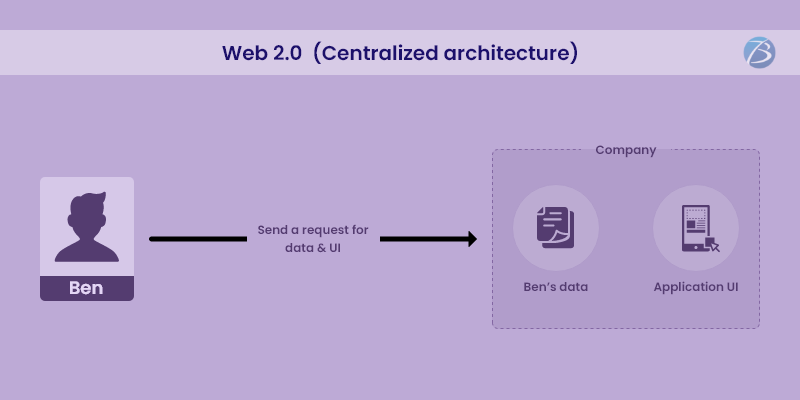
Web 3.0
Web 3.0 has taken things one step ahead through revolutionary add-ons and offers effective solutions to protect user data from security threats. Web 3.0 has started to transform the internet into a medium that correctly interprets user data inputs via different communication mediums like voice, text, etc. It actually understands all that the user intends to convey and offers a high level of customization.
This version of the internet has also devised significant approaches to protect user data from cyber-attacks. Unlike Web 2.0, Web3.0 has decentralized the network itself to return data ownership to the individuals. Web 3.0 websites and apps store users’ data in decentralized networks that cannot be controlled by a centralized authority like a tech company or a group of companies. Neither can tech companies utilize users’ data for personal gains. As such, web users have become stakeholders of the network & sole owners of their data. In such a decentralized network, users can tokenize their transactions without having to worry about privacy concerns and security breaches.
Cutting-edge technologies like AI, ML, Big Data, & Blockchain are contributing to the growth of Web 3.0.
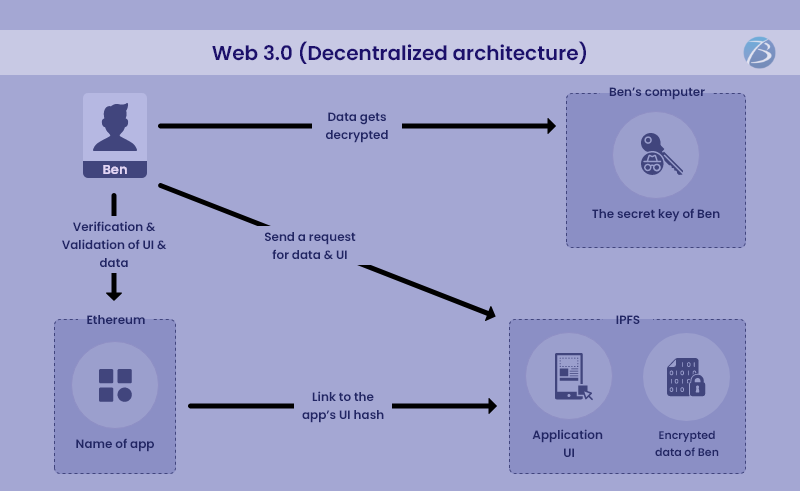
Noteworthy Features of Web 3.0
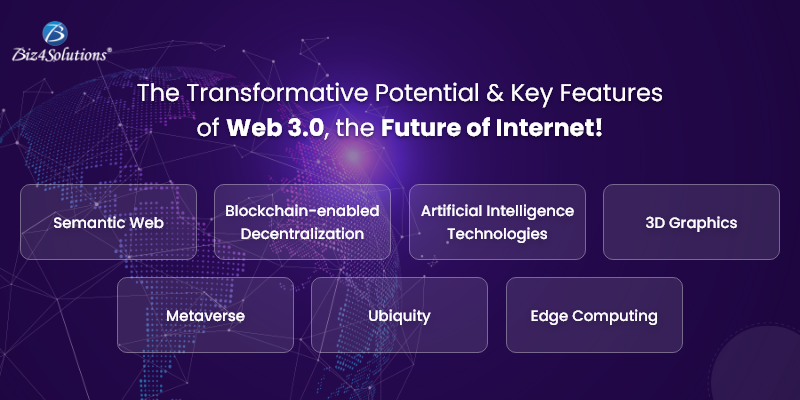
Semantic Web
The semantic web empowers web technologies to generate, share as well as connect content using a search & analysis process. The key objective of the semantic web is to store data and organize it in a manner that will teach the system how to find out the meaning of a piece of information. Here, the technologies can comprehend the real meaning of words, unlike the yesteryear technologies that just recognized keywords and numbers.
Blockchain-enabled Decentralization
Decentralization is one of the most important USPs of Web 3.0. In the previous version, Web 2.0, a single server or location maintained data in the form of definite web addresses using HTTP. Web 3.0 employs Blockchain to store this information simultaneously in multiple locations; this is called decentralization. This prevents leading tech companies from controlling or using users’ data for their profit. Thanks to a decentralized network, users are the owners of their assets or data. This data is stored by networks via a peer-to-peer interconnection. And, users are able to log in safely through the internet without the chance of being tracked. Hence, individuals can sell their data via decentralized networks. This data can be generated by powerful computing resources like computers, smartphones, sensors, automobiles, and appliances.
Web 3.0 Blockchain can boost the speed of transactions considerably, besides making the transactions hack-proof. Take a look at some Blockchain-based use cases of Web 3.0 applications. These use cases include the ones that have already been implemented as well as the services that are expected in the coming years.
Cryptocurrency: Cryptocurrencies like Bitcoin have started gaining momentum. Well, such cryptocurrencies are actually Web 3.0 crypto applications that focus on creating a novel approach to handling currencies.
NFT: NFTs or non-fungible tokens is another use case of Web3.0 apps. These tokens are stored within a Blockchain with a cryptographic hash. Users can produce digital items and create an NFT. NFT creation will help users protect their PII (personally identifiable information) and intellectual property.
dApp: dApps or decentralized apps are programs created on top of a Blockchain. dApps are logged in an immutable ledger & run programmatically. They are used to develop smart contracts and are used for delivering services.
DeFi: The concept of DeFi or decentralized finance is one of the latest use cases of web 3.0 applications. Here, a decentralized Blockchain is employed for carrying out financial services outside the confines of centralized banking infrastructure.
Cross-chain Bridges: There are several Blockchains existing within a Web 3.0 world. And, cross-chain bridges establish a certain degree of interoperability or connectivity across these Blockchains.
DAOs: DAOs are envisaged to act like organizing entities for Web 3.0 services by providing a structure to a decentralized approach and governing it as well.
Artificial Intelligence Technologies
Web 3.0 is based on AI technologies like Machine Learning, Deep Learning, Big Data, & Data Analytics. Web 3.0 enables modern computers to combine semantic abilities and technologies like NLP (Natural Language Processing) to figure out the context of information from a human’s perspective. This way, they can quickly process information & deliver more relevant outcomes to users.
Also, Web 3.0 leverages the power of ML (Machine Learning), a subset of AI (Artificial Intelligence). ML algorithms can imitate human learning with the help of data & algorithms and gradually enhances its accuracy levels. This is the reason why AI/ML algorithms can make accurate predictions and improve decision-making. This function will prove beneficial for domains like advertising, healthcare, etc. Web 3.0 websites and applications are becoming smarter, such that they can comprehend a user’s expressions, mood, & emotions, and even identify sarcasm.
3D Graphics
Employing technologies like AR (Augmented Reality), VR (Virtual Reality), and 3D graphics, Web 3.0 will be more spatial. 3D worlds can create immersive user experiences and focus on bridging the gap between the real and the virtual worlds. Today, 3D designs are utilized in websites as well as services. eCommerce websites, gaming apps, museum guides, & geospatial contexts are some of the popular examples of 3D, AR, & VR implementation.
Metaverse
The revolutionary technology Metaverse with the help of Blockchain-empowered Web 3.0 is all set to connect the real and virtual worlds like never before.
Ubiquity
This feature was already introduced by Web 2.0, and Web 3.0 promises to elevate this ability to new heights. With Web 3.0, users can access the content as well as the services offered by the internet at any time of the day. Besides, users can access internet services using any number of devices. Furthermore, the internet can be accessed through IoT sensors, without the need for mobile phones or computers.
Edge Computing
Edge computing refers to the processing of data & apps at the edge of the network on devices like laptops, smartphones, sensors, smart cars, and appliances. Web 3.0 moves data centers from a centralized position to the edges, so that the creators gain control of their data.
How can Web 3.0 benefit Businesses?
Self-executing: No Dependence on Service Providers
Web 3.0 data is directly stored on Blockchain networks with decentralized nodes. This data can be accessed by authorized users from any device. Due to decentralization, users need not depend on third-party service providers for carrying out specific tasks. Instead, users can reap the benefits of self-executing smart contracts. With smart devices & computers, tasks will be automatically executed without glitches as per the specific conditions established by the business entity. Contracts will be effortless to execute as machines will clearly understand the transactions taking place between two parties.
Unlike Web 2.0, businesses need not have to pay hefty charges or allow providers to monetize their data in exchange for services. Therefore, providers cannot profit from users’ data. Here, data is shared with different services and apps rather than being owned. Data ownership and control lie solely with the creator. This will increase efficiency and reduce operational expenses for business transactions.
High-grade Security
Blockchain technology protects & encrypts users’ data. One cannot modify, remove, or tamper with any data, information, or transaction that gets recorded on the Blockchain-based Web 3.0. As such, businesses can share valuable data with their employees, suppliers, or clients without having to worry about losing data to cyber-criminals. Also, users will receive several backups for their data so that data is not lost during incidents like app crashes. So, businesses need not invest in adopting high-grade security measures to protect their data from security threats or creating backups.
Avant-garde App Interface
Web 3.0 is multi-dimensional and so, it empowers websites and web apps to deliver exceptional user experiences. For instance, a mapping service provider such as Google can offer users advanced functionalities like traffic updates in real-time and provide suggestions for route planning & lodging.
Advanced Search & Customized Browsing
The search engine of Web 3.0 is based on natural languages. Therefore, businesses can use a more organic approach for optimizing their websites for search engines and say goodbye to complex keyboard techniques for this purpose. Needless to say, users reap the benefits of a more customized browsing experience.
Well-connected Environment
Peer-to-peer communication & highly adaptable governance will assist participants in share ties. These shared ties will result in a dynamic network that allows seamless collaboration of resources between various participants. Such collaboration will help business enterprises find solutions to complex problems & issues.
Streamlined Business Operations
With Web 3.0, businesses can create and maintain a transaction ledger that involves all the relevant parties. Businesses can also benefit by automating contracts via smart contracts and handling supply chains effortlessly.
Utilizing the power of Web 3.0 technologies, eCommerce marketers can go for customized targeting, using solutions that will suit the requirements of every customer. Web 3.0 applications facilitate operational tasks like managing returns & refunds, tracking order delivery, offering post-sales services to customers, and obtaining consumer feedback.
Final Thoughts:
Web 3.0, the third generation of the web, promises to make the internet all the more interesting, engaging, immersive, secure, and handy. Web 3.0 has already started creating revolutionary apps and services. Some use case examples include Wofram Alpha, a smarter Siri, Augur, Farmatrust, Trustatom, Bitpesa, Bitmari, etc. If you too would like to develop a service, website, or application using the power of Web 3.0, seek technical assistance from an experienced web application development company in USA.
Other articles and publications:
Articles and publications of other companies:
 Pixel Values Technolabs: Your Trusted Partner for The Best Codeigniter Development Services In India
Pixel Values Technolabs: Your Trusted Partner for The Best Codeigniter Development Services In India
- +1 (469) 277-0804
- 8305 Tripoli Trl, Frisco, TX 75034, United States
- www.biz4solutions.com/


